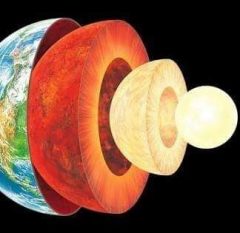 Young paleontologist launches fundraising to restore the findings of two million years ago
Young paleontologist launches fundraising to restore the findings of two million years ago
POSSAGNO. A “small” rhinoceros, a long-tusked elephant and the distant relative of a deer graze the grass on the hills of Possagno. Two million years ago the area was a small “tropical” oasis, full of woods and ponds. The dinosaurs were already extinct, the man did not exist yet, the area was the ideal habitat for large herbivorous mammals.
Then came the glaciations, which brought prehistoric herds to extinction, but the traces of their passage were not lost. Almost thirty years ago, a trifle in the timeline, in the village of Steggio in Possagno, the earth began to give us back the past. A group of scholars began excavations and discovered the most important fossil deposit in Northern Italy dating back to the middle of the Villafranchiano medio. The clay in the subsoil had preserved skeletons and precious fragments of the primordial fauna. A stephanorhinus etruscus (rhinoceros), an archidiskodon meridionalis (elephant), a pseudodama nesti, very similar to a deer as well as the eucladocero. There are also a bison, a dormouse, a rodent and many other small mammals. All the discovered material is finished at the Possagno museum but, as often happens in Italy, resources were lacking to enhance the cultural heritage. There was a risk that everything would end up in the dust. Fortunately, it did not happen that way. The project resumes today vigor thanks to the commitment of a young paleontologist, Elena Ghezzo, 33, originally from the Lido of Venice, who decided to rekindle the light on the fossils of Steggio, starting an online fundraising campaign to activate a program of research and comparison. “Despite the considerable importance, the Steggio site is virtually unknown internationally, and it is a pity. I would like to try to renew the interest on the local level and also across the border, “says the paleontologist. At his side in this ambitious challenge his colleagues Mauro Bon and Marzia Breda, as well as the laboratory technician Paolo Reggiani. “We obtained the permits from the Municipality and the Superintendency and now the material is at the Museum of Natural History of Venice. Not having funds, we thought that the quickest way was to try the GoFundMe site where everyone can donate something if interested »adds Ghezzo. The goal is to reach 7 thousand euros as soon as possible, since the permits for the study will probably expire in the spring of 2018. “If we reach the fixed budget we will be able to digitize the material and compare it with some fossil collections in Spain and Germany. ahead of the studies on the fauna “the expert points out. It will be like seeing the biodiversity of our planet aboard the time machine. «The comparison with the species found in other countries will allow us to understand how they evolved, their characteristics and knowledge of which animals were present even if they have not been preserved, “says Ghezzo. His long curriculum reveals many experiences as a “hunter” of fossils: from the finds of Bolca to the restoration of a horse to the archaeological museum of Oderzo, while in Turin he worked on an African loxodonta and a megatherium, respectively relatives of an elephant and of a sloth. Being able to read the fossils of Steggio, however, has a special charm. “Since I was a child, I loved the natural sciences,” he explains. “Being able to give the right visibility to the Treviso site means reconstructing a moment of life that no longer exists”. Another important piece would be added to the genealogical tree of the Earth. His long curriculum reveals many experiences as a “hunter” of fossils: from the finds of Bolca to the restoration of a horse to the archaeological museum of Oderzo, while in Turin he worked on an African loxodonta and a megatherium, respectively relatives of an elephant and of a sloth. Being able to read the fossils of Steggio, however, has a special charm. “Since I was a child, I loved the natural sciences,” he explains. “Being able to give the right visibility to the Treviso site means reconstructing a moment of life that no longer exists”. It would add another important piece to the genealogical tree of the Earth. His long curriculum reveals many experiences as a “hunter” of fossils: from the finds of Bolca to the restoration of a horse to the archaeological museum of Oderzo, while in Turin he worked on an African loxodonta and a megatherium, respectively relatives of an elephant and of a sloth. Being able to read the fossils of Steggio, however, has a special charm. “Since I was a child, I loved the natural sciences,” he explains. “Being able to give the right visibility to the Treviso site means reconstructing a moment of life that no longer exists”. It would add another important piece to the genealogical tree of the Earth. respectively relatives of an elephant and a sloth. Being able to read the fossils of Steggio, however, has a special charm. “Since I was a child, I loved the natural sciences,” he explains. “Being able to give the right visibility to the Treviso site means reconstructing a moment of life that no longer exists”. It would add another important piece to the genealogical tree of the Earth. respectively relatives of an elephant and a sloth. Being able to read the fossils of Steggio, however, has a special charm. “Since I was a child, I loved the natural sciences,” he explains. “Being able to give the right visibility to the Treviso site means reconstructing a moment of life that no longer exists”. Another important piece would be added to the genealogical tree of the Earth.
© RESERVED REPRODUCTION













You must be logged in to post a comment.